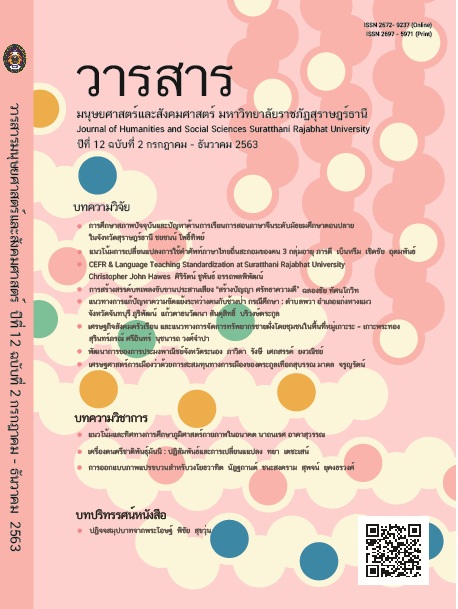Future Trends on Physical Geography Education
Main Article Content
Abstract
The academic article named Future Trends on Physical Geography Education aimed to explain changes in physical geography which wasdiversified according to global contexts and situations nowadays. The researcher applied teaching experiences, academic field trips as well as deeper researching about updated data to communicate inform of an academic article which was friendly for readers to understand. The article also aimed to educated readers by its results for employing in physical geography education.
Physical geography is a science that is based on explicit knowledge required reasoning of nature itself. It explains the relationship between natural phenomenon and human living. Therefore, contents of physical geography is considered as the syntheses of knowledge derived from the relationships of various phenomenon effecting human living on the earth. People who understand natural phenomenon changing on the earth can adapt themselves to natural affects which will be occured, for instance,
climate change, plate tectonic changes as well as can understand problems arising from changes in social, economic and political conditions due to environmental changes. Therefore, those who have explicit knowledge and understanding in physical geography can be able to shape proper body of knowledge about natural phenomenon related to human living for themselves. Beside, the knowledge can be developed as skills in using physical geography knowledge to interpret events or phenomenon that can be occured on the earth in order to correct what will be happened in the future as best as they can.
Article Details

This work is licensed under a Creative Commons Attribution-NonCommercial-NoDerivatives 4.0 International License.
All published manuscripts have been verified by peer-peer professors in the fields of humanities and social sciences. Reprinting of the article must be authorized by the editorial staff.
References
กนก จันทร์ทอง. (2541). สิ่งแวดล้อมศึกษา: ความรู้เรื่องสิ่งแวดล้อม. (พิมพ์ครั้งที่ 3).
ปัตตานี: มหาวิทยาลัยสงขลานครินทร์ วิทยาเขตปัตตานี.
ราชบัณฑิตยสถาน. (2549). พจนานุกรมศัพท์ภูมิศาสตร์ ฉบับราชบัณฑิตยสถาน. (พิมพ์
ครั้งที่ 4). กรุงเทพฯ: ชวนพิมพ์.
Alam, S. (2011). Secondary Geography for Classes IX-X. Bangladesh:
National Curriculum and Textbook Board.
Brenner, N. (2019). mobilities, social and spatial. Los Angeles: University of
California.
Meteorological Department. (2014). Meteorological knowledge. [online].
Retrieved from http://www.tmd.go.th/info/info.php?FileID=1 [2562,
April 15].
Murphy, D. (2019). The Future of Disaster Preparedness: How big events
create big job opportunities. Massachusetts: Northeastern University.
Pasqui, M. (2020). Climate change, future warming, and adaptation in
Europe. Animal Frontiers, 9(1), 6 - 11.
Pipkin, B.W., Trent, D.D., & Hazlett, R. (2005). Geology and the environment
(4th ed.). California: Thomson Learning.
Smithson, P., Addison, K., & Atkinson, K. (2008). Fundamentals of the
Physical Environment (4th ed.). New York: Routledge.
Thrift, N. (2014). The future of geography. Geoforum, 33(3), 291 - 298.
Wendy, G. (2019). The Geography of Geography. Massachusetts: Harvard
University.


